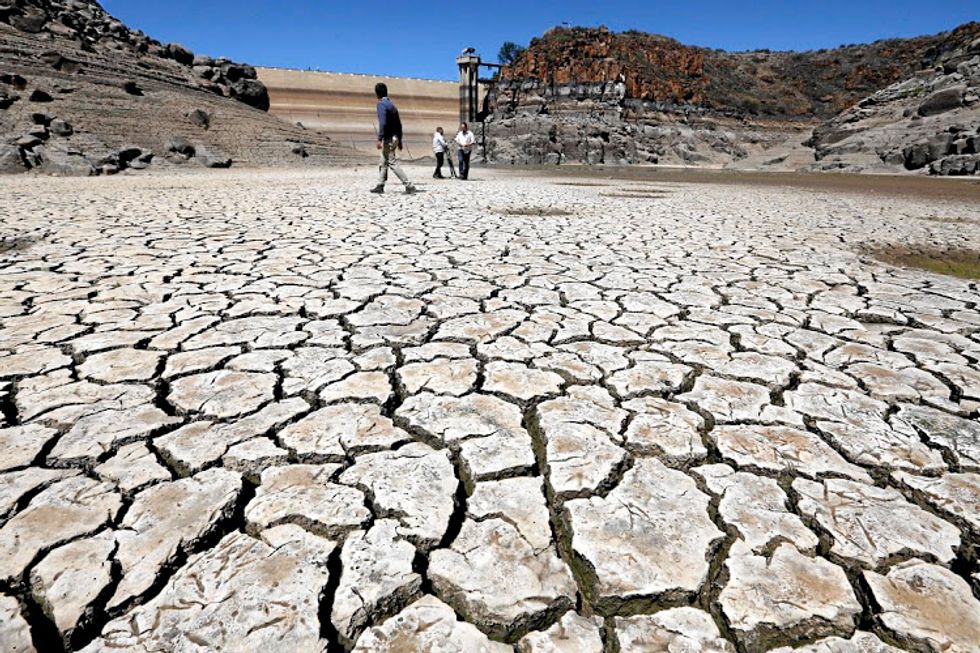In preparations for what officials have called Day Zero, the city of Cape Town has issued restrictions on its citizens water use; Day Zero representing the day when the city is completely out of clean water. While Day Zero was originally pegged for April of this year, it has since been pushed back to 2019, leaving many wondering whether or not it was just a ploy by the Cape Town government to curb its citizens’ water use.
Either way, one thing is certain, Cape Town is facing a severe water shortage and is one of the world’s first major cities to fear losing its access to water outright. If Day Zero does occur, the South African government will be forced to turn off every tap in the city and distribute water at various checkpoints.
While there are certain companies and government agencies trying to figure out a solution– ranging from desalination to harvesting icebergs in Antarctica–the idea that a city with a population of almost four million could run out of water is terrifying. To compound things further, NASA recently conducted scans of the Earth and determined that there are dozens of areas at risk of becoming the next Cape Town.
Cape Town’s water shortage is nothing short of catastrophe in the making, but some of the places that NASA is pointing out have much higher population densities. The study, which uses gravitational satellite data, pinpointed northern India, northeastern China, and most of the Middle East as having the potential for a water crisis in the near future. Gravitational satellites are different in that they don’t take pictures, but rather measure the gravitational pull of the Earth, which can be affected by the presence of water. Using these satellites, NASA calculated the rate of water depletion from 2002-2016 and based their predictions off that data. Currently, more than 1.2 billion people lack access to clean water, but with these findings, it’s possible that 500 million more may be at risk. Many experts are calling for cities around the world to start preparing for the eventuality of severe water shortages.
 The Gamka Dam in Beufort WestThe Sunday Times
The Gamka Dam in Beufort WestThe Sunday Times
Outside of California and the southwestern United States, Americans have it pretty easy regarding water shortages. The global water crisis will hit us in a far different way than it will hit the third world. Of course, the economic implications will be far reaching, and anywhere facing economic tensions will naturally see an increase in violence, but the real issue facing the Western world won’t be war. It’ll be the mass migration necessitated by the violence and financial strife the water shortage will cause. People will be fleeing their homes and lining up along borders all over the world. Countries like Greece, Turkey, and Azerbaijan will have to deal with fleeing refugees at an unprecedented level, and barring a major shift in the way Europeans view immigration, these massive migrations could put an extreme amount of stress on governments to heavily secure their borders.
If the xenophobic rhetoric currently coming from both American and European leadership has a chance to manifest itself into policy, future migrants could face some of the worst human rights violations in modern history. When sterile terms like “instability” and “civil unrest” start appearing in the news, it’s important to understand what they actually mean. The standoff between the Israeli military and the Palestinians in Gaza, while completely unrelated to the water shortage, paints a pretty good picture of what border clashes could look like in the near future.
The question is quickly devolving from what we can do to prevent the water crisis to how we’re going to survive it. We can’t afford to ignore water scarcity in the same way in which we largely ignored climate change (which in turn exacerbated this crisis). Desalination is extremely expensive and while it has the potential to provide us with more drinkable water, it may not be the most reliable method. One interesting fact about the way we use our water is that 70% of the freshwater we use isn’t for drinking, but rather for agriculture. Some scholars posit that by optimizing the way we irrigate our farms, more water could be conserved. Others point to population control as the solution, citing that worldwide demand for water will soon outstrip the supply.
Both options seem untenable. The most realistic solution is to find a way to perform desalination in a less energy-intensive way. Perhaps Saudi Arabia’s solar-powered plants will provide a the world with a sustainable model for creating clean water. Whatever the fix, we’re at the point now where a single country’s contributions are unlikely to shift the balance. It’ll take a concerted worldwide effort to effectively combat the coming water crisis. Assuming this happens, and countries all over the world start implementing new and innovative desalination processes, the question will then become whether or not it’s too little too late.





